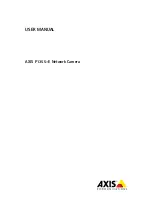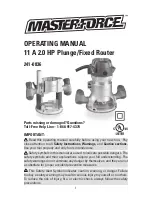
Appendix A: Router Terms
What is a firewall?
A firewall is a device that protects one network from another, while allowing communication between the two.
A firewall incorporates the functions of the NAT router, while adding features for dealing with a hacker
intrusion or attack. Several known types of intrusion or attack can be recognized when they occur. When an
incident is detected, the firewall can log details of the attempt, and can optionally send email to an
administrator notifying them of the incident. Using information from the log, the administrator can take action
with the ISP of the hacker. In some types of intrusions, the firewall can fend off the hacker by discarding all
further packets from the hacker’s IP address for a period of time.
What is NAT?
NAT stands for Network Address Translation. Another name for it is Connection Sharing. What does this
mean? Your ISP provides you with a single network address for you to access the Internet through. However,
you may have several machines on your local network that want to access the Internet at the same time. The
router provides NAT functionality that converts your local network addresses to the single network address
provided by your ISP. It keeps track of all these connections and makes sure that the correct information gets
to the correct local machine.
Occasionally, there are certain programs that don't work well through NAT. Some games, and some specialty
applications have a bit of trouble. The router contains special functionality to handle the vast majority of these
troublesome programs and games. NAT does cause problems when you want to run a SERVER though.
When running a server, please see the DMZ section below.
What is a DMZ?
DMZ really stands for Demilitarized Zone. It is a way of separating out part of your local network so that is
more open to the Internet. Suppose that you want to run a web-server, or a game server. Normal servers like
these are blocked from working by the NAT functionality. The solution is to "isolate" the single local computer
into a DMZ. This makes the single computer look like it is directly on the Internet, and others can access this
machine.
Your machine isn't really directly connected to the Internet, and it really has an internal local network address.
When you provide the servers network address to others, you must provide the address of the router. The
router "fakes" the connection to your machine.
You should use the DMZ when you want to run a server that others will access from the Internet. Internal
programs and servers (like print servers, etc) should NOT be connected to the DMZ
A-Link RoadRunner 21 Router
89
Содержание RoadRunner 21
Страница 1: ......
Страница 6: ...A Link RoadRunner 21 Router vi APPENDIX D UPNP SETTING ON WINDOWS XP 96 APPENDIX E GLOSSARY 100 ...
Страница 21: ...A Link RoadRunner 21 Router 15 3 1 Windows ME 98 ...
Страница 22: ...3 2 Windows 2000 A Link RoadRunner 21 Router 16 ...
Страница 23: ...3 3 Windows XP A Link RoadRunner 21 Router 17 ...
















































